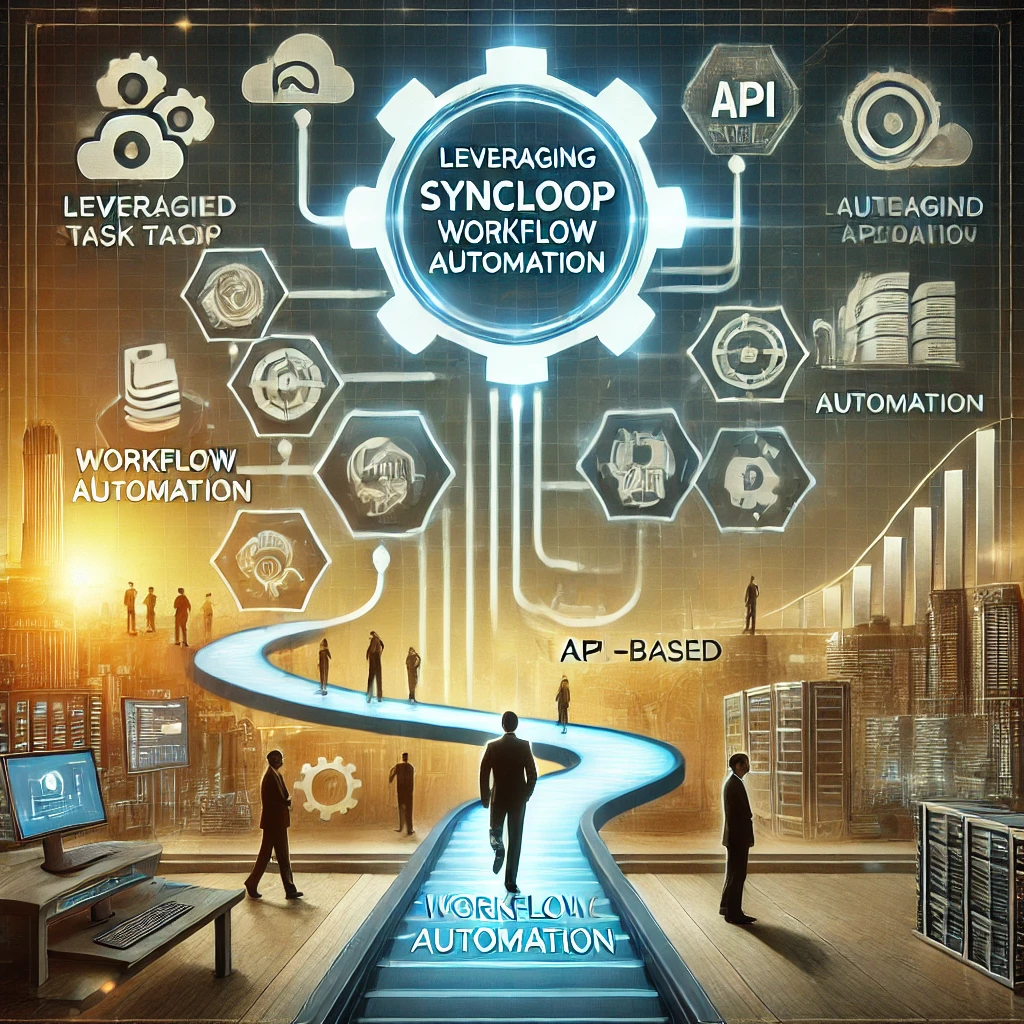Leveraging Syncloop for API-Based Workflow Automation

Why API-Based Workflow Automation Matters
Automation through APIs delivers significant benefits:
- Increased Efficiency: Minimize manual intervention for repetitive tasks.
- Improved Accuracy: Reduce human errors with standardized workflows.
- Scalability: Handle growing demands by automating complex, high-volume processes.
- Cost Savings: Optimize resource utilization by streamlining operations.
- Enhanced Integration: Connect disparate systems for unified operations.
Syncloop simplifies the design and management of these workflows, ensuring seamless integration and robust performance.
Key Features of Syncloop for Workflow Automation
1. Visual Workflow Designer
Create and manage workflows visually, reducing complexity and increasing transparency.
2. Dynamic Data Transformation
Process, validate, and enrich data in real-time to ensure compatibility and usability.
3. Event-Driven Architecture
Trigger workflows dynamically based on API events or custom conditions.
4. Real-Time Monitoring
Track execution, performance metrics, and error rates in workflows.
5. Error Handling Mechanisms
Implement retries, fallbacks, and notifications to handle failures effectively.
6. Seamless Integration
Connect APIs across diverse platforms, services, and systems.
Steps to Automate Workflows with Syncloop
Step 1: Identify Automation Opportunities
- Pinpoint repetitive or time-consuming tasks in your operations.
- Define objectives for automation, such as reducing errors or accelerating processes.
Step 2: Design Workflows
- Use Syncloop’s visual workflow designer to:
- Map out step-by-step processes, including triggers, conditions, and actions.
- Incorporate multiple APIs and data sources for seamless integration.
- Test workflows with sample data to ensure logical accuracy.
Step 3: Configure Data Handling
- Use Syncloop’s Transformers to:
- Standardize input data formats for consistency.
- Enrich data with additional context or metadata.
- Validate inputs dynamically to prevent errors downstream.
- Implement conditional logic for workflows requiring dynamic decision-making.
Step 4: Enable Real-Time Processing
- Configure event-driven workflows to:
- Respond instantly to triggers, such as incoming API requests or user actions.
- Push notifications or updates to relevant systems in real-time.
- Optimize workflows for low latency and high reliability.
Step 5: Monitor and Refine
- Use Syncloop’s monitoring tools to track:
- Workflow execution times.
- Error rates and resolution patterns.
- Analyze logs and performance metrics to identify areas for improvement.
Step 6: Handle Failures Gracefully
- Set up fallback mechanisms for critical workflows.
- Configure automated alerts to notify relevant teams of failures or anomalies.
Real-World Applications
1. Order Processing
- Use Case: Automate order verification, inventory checks, and shipping updates.
- Features Used: Workflow automation, real-time monitoring, API integration.
2. Customer Support
- Use Case: Route customer queries dynamically to the appropriate support teams.
- Features Used: Event-driven workflows, data transformation, error handling.
3. IoT Systems
- Use Case: Monitor device statuses and trigger maintenance alerts automatically.
- Features Used: Real-time processing, conditional logic, scalability.
4. Finance Operations
- Use Case: Streamline invoice processing, approval workflows, and payment triggers.
- Features Used: Secure APIs, automated workflows, real-time monitoring.
Best Practices for API-Based Workflow Automation
- Start Small: Automate high-impact, low-complexity tasks first to gain quick wins.
- Monitor Continuously: Use real-time metrics to detect and resolve issues proactively.
- Incorporate Flexibility: Use conditional logic to adapt workflows dynamically.
- Secure Workflows: Protect sensitive data with encryption and robust access controls.
- Iterate and Optimize: Refine workflows regularly based on performance insights.
Why Choose Syncloop for Workflow Automation?
Syncloop provides a user-friendly platform for designing, managing, and optimizing API-based workflows. Its powerful tools for monitoring, error handling, and integration ensure reliable and scalable automation solutions.
Conclusion
API-based workflow automation is a game-changer for modern businesses, enabling efficiency, accuracy, and scalability. Syncloop simplifies the complexities of automation with its robust features, allowing organizations to focus on innovation and growth. By leveraging Syncloop, you can build workflows that drive productivity and operational excellence.
Back to Blogs